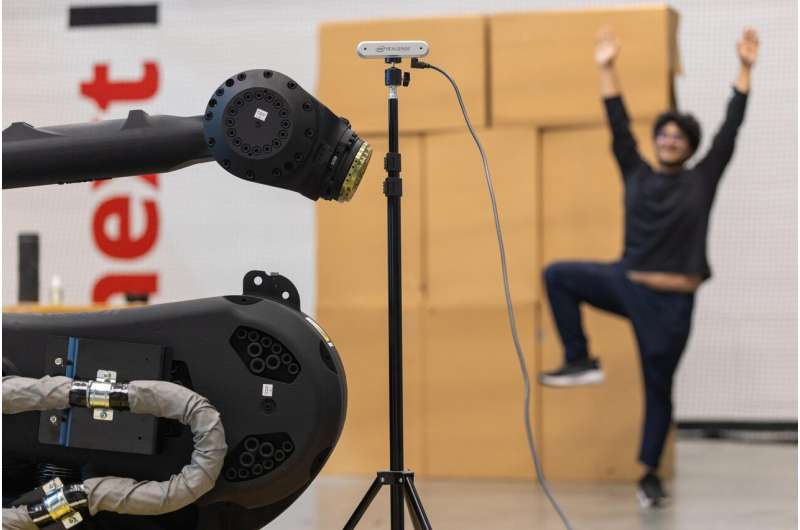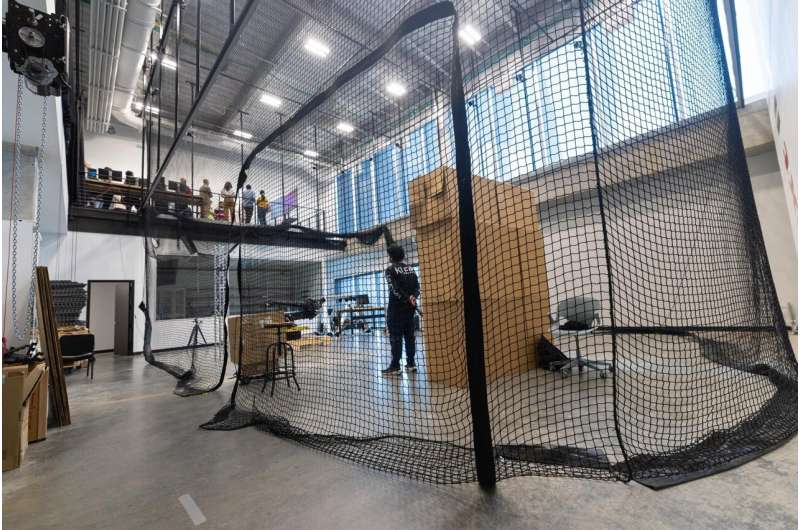The University of Cincinnati is working with Ohio’s Bureau of Workers’ Compensation to use digital-twin technology to make workplaces safer.
UC College of Engineering and Applied Science professors Manish Kumar and Sam Anand are developing tools that employers can use to prevent worker injuries from accidents, repetitive stress and other common causes.
In a demonstration at UC’s Digital Futures, they provided proof of concept using cameras to create a live, virtual representation of a worker in their actual workspace such as a warehouse or factory floor that can provide real-time feedback to workers about everything from potentially risky motions such as straining to reach something to immediate warnings that can avoid a disastrous collision with moving equipment.
Researchers in UC’s Industry 4.0/5.0 Institute are partnering with industrial collaborators such as Siemens, Innovative Numerics, Worthington Steel and thyssenkrupp Bilstein, which makes high-performance shock absorbers and suspension systems. The research team’s proof-of-concept demonstration attracted interest from dozens of other companies.
“We could not have pulled a better team from UC to do this project,” Kumar said.
Ohio recorded 76,800 nonfatal workplace injuries in 2023. More than half of them were considered severe, involving days away from work, job transfers or work restrictions while workers recuperated.

The system uses cameras to capture the movements of workers in real time to create a virtual representation called a digital twin. The system is so advanced that it can send real-time warnings to an employee’s smartwatch, alerting them about proximate dangers such as an approaching forklift behind them or around a corner, or even reminders that they might be stressing certain parts of their bodies through repetitive motions.
The system also compiles data summarizing the worker’s movements and activities over the course of a day.
A UC engineering student demonstrated the concept in a lab where UC engineers test drones and other equipment.
An audience of business representatives watched from windows on the second story as the student mimicked tasks such as repeatedly reaching up or down for things in front of him. On smart TV screens mounted in the audience above, a computer rendering matched the student worker’s movements and posture precisely in real time.
For another demonstration, a wheeled box standing in as a forklift approached the student worker from behind and his smartwatch sounded an alarm to warn him of the approaching danger.
“In the last 10 years we have gotten a boost from artificial intelligence and deep networks. We can now use motion-action models and MotionGPT to create digital twins,” Kumar said.

Project partner and UC Professor Kelly Cohen and his aerospace engineering students have been ensuring that the AI deployed in the system works as expected and can be trusted by its users.
“We have to make sure that AI doesn’t hallucinate and introduce new risks,” Cohen said.
Anand said the data collected by the camera could inform workers about the dangers of repetitive motion injuries, which account for about one-third of workplace injuries nationwide.
The system can generate a daily ergonomic assessment that scores workers on their collective risks of injuries based on their posture and motions.
“The main point is ergonomic analysis. Real-time data can be sent to smartwatches in a way that workers can understand. You can train workers to avoid ergonomic deficits that can lead to injuries,” Anand said.
Having demonstrated that their real-time digital twin system works effectively, researchers are developing practical applications. The Ohio Bureau of Workers’ Compensation awarded a follow-up grant to support the development of a functional prototype.
“We’re just scratching the surface for potential applications,” Kumar said. “There is a huge burden on us for responsible use. We want to be the guardian of the good.”
Citation:
AI system helps prevent workplace injuries (2025, August 11)
retrieved 11 August 2025
from https://techxplore.com/news/2025-08-ai-workplace-injuries.html
This document is subject to copyright. Apart from any fair dealing for the purpose of private study or research, no
part may be reproduced without the written permission. The content is provided for information purposes only.

